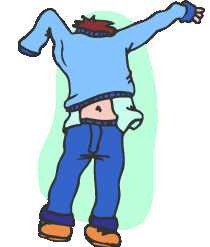

MedFriendly®


Apraxia
Apraxia is an impairment in performing voluntary skilled
movements or purposeful acts despite intact motor
(movement) abilities. Thus, the person with apraxia can still
comprehend what needs to be done and has the muscular
strength, coordination, and knowledge to do an activity (e.g.,
use a pair of scissors), but cannot do it when attempted.
Apraxia is caused by acquired brain damage or disease.
People with apraxia often do not know that they have such a
problem because the area where the brain injury occurs
causes a lack of insight into their condition.
Dressing apraxia
FEATURED BOOK: A Parents' Guide to Childhood Apraxia of Speech
The brain damage that causes apraxia is often in the left side of the brain (although it can
occur on the right), usually the parietal lobe or frontal lobe. The parietal lobe is the middle
area of the top part of the brain (on both sides) and is responsible for integrating sensory
information to form perceptions and spatial sense. It plays an important role in
processing the spatial relationships between multiple objects, parts of objects, and the
body so these features can interact.
The frontal lobe is an area of brain tissue in the front of the brain. Damage to a part of
the frontal lobe known as the premotor cortex is known to cause ideomotor apraxia (see
below). The premotor cortex is an area in the front part of the brain that plays an
important role in motor planning (e.g., selecting the movements to be executed).
"Where Medical Information is Easy to Understand"™
Damage to the corpus callosum can also cause apraxia. The
corpus callosum is a group of nerve fibers that connect both sides
of the brain and allow them to communicate. Apraxia is often
divided into two types: ideational and ideomotor. Ideational apraxia
is a disturbance of voluntary movement in which a person misuses
objects because he/she has difficulty identifying the concept (idea)
or purpose behind the objects.
Ideomotor apraxia is a disturbance of voluntary movement in which
a person cannot translate an idea into movement. The two types of
apraxia often co-occur.

Sometimes, apraxia is classified based on the function that is affected. Examples include dressing
apraxia, speech apraxia, gait (walking) apraxia, orofacial/buccofacial apraxia (difficulties carrying out
facial movements on demand), oculomotor/ocular apraxia (difficulties with purposeful eye movements),
constructional apraxia, or limb-kinetic apraxia (difficulties carrying out precise actions with the arm or leg).
Certain types of apraxia indicate the presence of certain pathological conditions. For example,
oculomotor/ocular apraxia is one of three elements of Balintís syndrome, a neurological condition which
also causes optic ataxia (inability to move the hand to an object by using vision) and simultanagnosia
(inability to recognize more than one object shown at the same time).
Apraxia can resolve spontaneously but certain forms of treatment can be helpful such as physical therapy
and speech therapy. Apraxia comes from the Greek word "a" meaning "to do without," and the Greek word
"pratto" meaning "to do." Thus, apraxia roughly translates into "without being able to do."














